Israel Adventures
The first stop on the second day in Israel was at Jaffa, also known as the port of Israel. This was the first time I realized how diverse Israel was in terms of modernity and history. In order to get to Jaffa, we had to drive through Tel Aviv, which was just like any other modern, first world nation. There were modern buildings, paved roads, stop lights, and A LOT of electric bicycles. It is a modern nation state.
Then you pull up to Jaffa, and you realize the historical relevance of a place like Jaffa, not just for the Bible, but for the modern world. Artists, who now have taken over Jaffa, did a good job of merging the modern with the ancient. We would walk through narrow limestone streets, and come to a place where a piece Israel is memorialized. These is seen in a large suspended orange tree which is sustained on the Israeli invented drip method and in the large monument at the top of a lookout point with the ancient fathers of Israel engraved on it.
Walking through Jaffa helps you remember that there is a legacy in Israel. That there were people that came before the people who are there now, and there are people who will follow them, but somehow everyone is connected. The Jewish people are united by a common ethnicity, but also by a common promise. God promised Abraham that his ancestors will remain, and they have, despite numerous evil schemes to destroy them. The fact that the state of Israel and the Jews remain is a testimony to the faithfulness of God when He makes His promises.
Jaffa and Alfei Menashe
Jaffa
The first stop on the second day in Israel was at Jaffa, also known as the port of Israel. This was the first time I realized how diverse Israel was in terms of modernity and history. In order to get to Jaffa, we had to drive through Tel Aviv, which was just like any other modern, first world nation. There were modern buildings, paved roads, stop lights, and A LOT of electric bicycles. It is a modern nation state.
Then you pull up to Jaffa, and you realize the historical relevance of a place like Jaffa, not just for the Bible, but for the modern world. Artists, who now have taken over Jaffa, did a good job of merging the modern with the ancient. We would walk through narrow limestone streets, and come to a place where a piece Israel is memorialized. These is seen in a large suspended orange tree which is sustained on the Israeli invented drip method and in the large monument at the top of a lookout point with the ancient fathers of Israel engraved on it.
Walking through Jaffa helps you remember that there is a legacy in Israel. That there were people that came before the people who are there now, and there are people who will follow them, but somehow everyone is connected. The Jewish people are united by a common ethnicity, but also by a common promise. God promised Abraham that his ancestors will remain, and they have, despite numerous evil schemes to destroy them. The fact that the state of Israel and the Jews remain is a testimony to the faithfulness of God when He makes His promises.
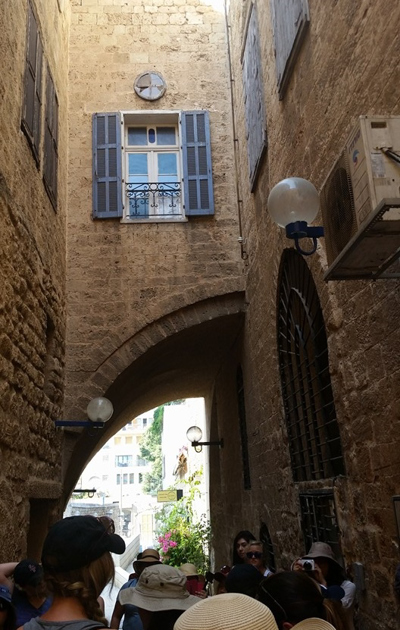
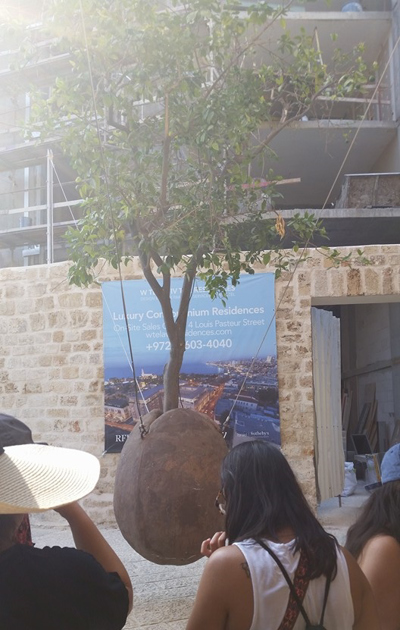
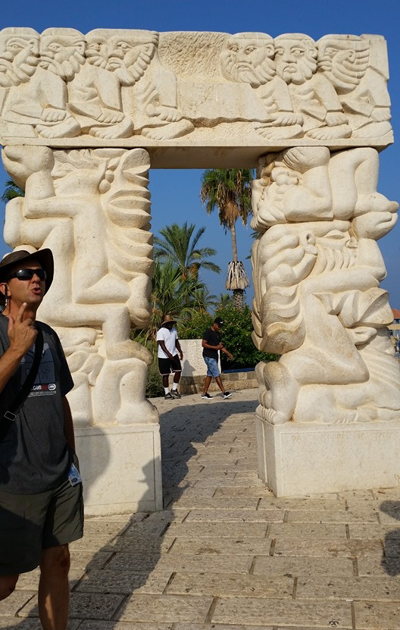
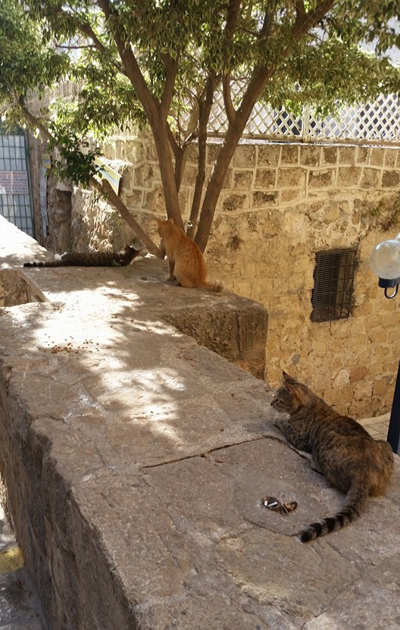
Two things that I really liked about Jaffa included, (1) the cats, and (2) the implications about Simon the Tanner. I will start by discussing Simon the Tanner. The importance of the house of Simon the Tanner is found in Acts 9-10. It was the place Peter received his vision of eating things impure and where Cornelius sent his men to find Simon Peter. This was a very important place in the Bible. Traditionally, it is said to be in a place within the city of Jaffa. However, the location of the house is not where a tanner's house would usually be. The work of a tanner to soften leather required the use of excrement in large vats. Because the process was a very smelly one, the house of a tanner was usually on the outskirts of the city, right next to the ocean. This was so the ocean air could blow away the bad smell from the curing process. Therefore, the "House of Simon the Tanner" was the first place we visited which, archaeology proves to not be the actual location. It was a big wake up call to me that good archaeology was extremely important to my study of the Biblical languages and the Bible that I have not been taking seriously in my studies.
The second thing in Jaffa that I really liked were the cats. After having lived in the slums of Manila for 4 months earlier last year, I saw a lot of maltreated and malnourished animals, including cats. However, it was not like this in Israel. Although all the cats appeared to be strays, or at least allowed to roam on their own around Israel, someone was taking good care of those cats. They did not run away from you or fear you, but cuddled you. At one point I even saw a woman feeding the cats along a wall like you would birds. It told me a lot about the value system in Israel. They valued stray animals in a way I have never seen before, even in America. They were truly God's caretakers of His creation. The animals knew they were loved.
From Jaffa we headed to a lookout point over a small portion of the West Bank. The West Bank is a part of Israel that is controlled by the Palestinian Authority (PA). The current "President" of the PA is Mahmoud Abbas, a member of the political party Fatah, formerly a terrorist organization created by the late Yasir Arafat. Fatah has since become much more moderate and it is not extremely dangerous to enter into Ramallah and the West Bank in comparison to Gaza, which is controlled by the terrorist organization, Hamas.
What I found most disturbing about this part of the trip was the locations of the areas that were under Palestinian control. We were shown a map and the place in the center of the country where two-thirds of the population of Israel resides. The area is in the shape of a triangle. Surrounding the area, on all three sides were Palestinian controlled areas. It made me think that if unification were to happen between these Palestinian areas and if they were militarized, that would spell out something very bad for the State of Israel. I just did not have a good feeling about the Palestinian areas being located where they are located. My intuition went from zero to one hundred and I just knew that something very bad could happen. It made the threat to the state of Israel very real in that moment. I saw everything that I had read in my textbooks as a political science major in a tower that calls Muslims to prayer in the distance. I knew in detail about the wars Israel faced in the past, and I knew the wars to come were just going to be much, much worst. It was disheartening and made me feel sick because I just knew something bad is going to happen and Israel can, for the most part, do nothing about it. It was the reality for a country I was beginning to love. It was sickening.
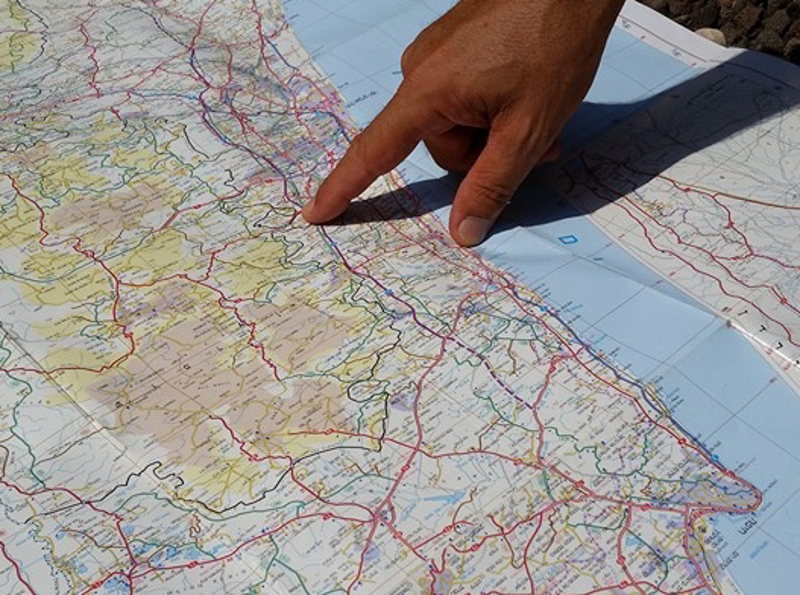
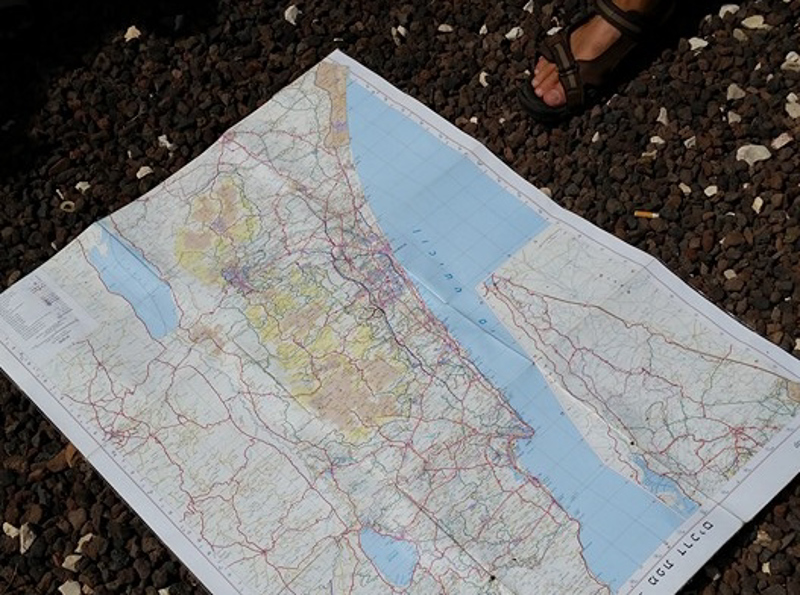
1.
Israel Bound
2.
Jaffa and Alfei Menashe
3.
Nazareth
4.
Magdala
5.
Capernaum
6.
The Sea of Galilee
7.
Our Friends, the Maronites
8.
Ceaserea Philippi
9.
Golan Heights
10.
Sderot and Moshav Netiv Ha’asara the Kabutz
11.
City of David
12.
Sabbath at the Western Wall and Shabbat Dinner
13.
Christian Quarter and the Church of the Holy Sepulchre
14.
The Garden Tomb
15.
En Gedi
16.
Masada
17.
The Dead Sea
18.
Israeli Politics
19.
Yad Vashem
20.
The Knesset
21.
Independence Hall
22.
Caeserea Maritima